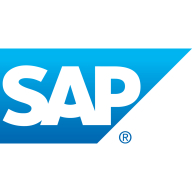


Find out what your peers are saying about Microsoft, Informatica, Talend and others in Data Integration.
SAP is indeed good at all this now, with so many components such as SAP Signavio, SAP EINS, SAP Work Zone, SAP ALM, Cloud ALM, SAP public cloud, SAP private cloud, and BTP, all of which are essential to meet the latest cutting-edge technologies.
Using SSIS has proven cost-effective as there are no additional fees outside the SQL Server license, and it significantly enhances data management efficiency.
I can get solutions quickly, and any tickets I submit to Oracle are responded to and resolved rapidly.
If you keep a high priority issue, such as a production impact, they certainly come and address it in no time.
Unlike level one where they basically search for the notes and provide responses, level two and level three are much better.
If I were to rate it from one to 10, I would say it has a nine to 10 for scalability.
It processes large volumes of data quickly.
If I use a source system like Oracle and a target system like Teradata, ODI will still run, but it struggles a bit with different infrastructures.
Now, they are coming up with many pricing options, which is tricky; they offer one thing for free, but charge for nine others.
The documentation is not up to the mark.
Within the South African context, if you are getting your enterprise agreement from First Technology, they don't provide support.
SSIS has a difficult learning curve when dealing with complex transformations.
ODI is cheaper compared to Informatica PowerCenter and IBM DataStage.
Utilizing SSIS involves no extra charges beyond the SQL Server license.
Oracle Data Integrator (ODI) is powerful and strong if my system uses Oracle components for environments like OLTP, enterprise data warehouse, or data marts.
SAP is indeed good at all this now, with so many components such as SAP Signavio, SAP EINS, SAP Work Zone, SAP ALM, Cloud ALM, SAP public cloud, SAP private cloud, and BTP, all of which are essential to meet the latest cutting-edge technologies.
SAP Data Services is mainly used for extraction of data, and it works with all databases.
The challenge lies in Microsoft withdrawing a lot of the qualifications and watering down its emphasis, leading to a perception that this is supposed to be an elite product.
One of the best aspects of SSIS is that it is built into Microsoft SQL Server, so there are no additional costs involved.



Oracle Data Integrator (ODI) is a data integration software solution that provides a unified infrastructure to streamline data and application integration projects. It uses a powerful design approach to data integration, which separates the declarative rules from the implementation details. The solution is based on a unique ELT (Extract Load Transform) architecture, eliminating the need for a standalone ETL server and proprietary engine.
Oracle Data Integrator Features
ODI has many valuable key features. Some of the most useful ones include:
Oracle Data Integrator Benefits
There are many benefits to implementing ODI. Some of the biggest advantages the solution offers include:
Reviews from Real Users
Below are some reviews and helpful feedback written by PeerSpot users currently using the Oracle Data Integrator (ODI) solution.
Brian D., Business Process and Strategy Specialist Advisor at NTTData, says, “The Knowledge Module (KM) is my favorite feature of ODI. This is where I learned how to use variables to make jobs dynamic. I took that knowledge and created a KM that would go into iTunes and pull the sales of eBooks. Making something that is reusable, like a KM, is important to not only reduce build time but also maintenance in the future.”
Ashok S., Applications Support Manager at a marketing services firm, mentions, "The most valuable features of ODI are the ease of development, you can have a template, and you can onboard transfer very quickly. There's a lot of knowledge modules available that we can use. If you want to connect, for example, a Sibyl, SQL, Oracle, or different products, we don't have to develop them from scratch. They are available, but if it's not, we can go into the marketplace and see if there's a connector there. Having the connector available reduces the amount of hard work needed. We only have to put the inputs and outputs. In some of the products, we use there is already integration available for ODI, which is helpful."
SAP Data Services is a top-ranking data integration and data quality tool. This is a product that aims to provide its users with effective access to their data in order to transform it and connect it to various business processes. SAP Data Services offers companies detailed data insights which improve decision-making and make company operations more effective.
Organizations can increase the value of their structured and unstructured data with the functionalities of this product regarding data integration, quality, and cleansing. Through various components such as:
the product transforms data into a ready-to-use resource for business insights.
Some of the key components of SAP Data Services include:
Through these components, the product allows its clients to access and integrate data sources and targets with native connectors. Users can derive meaning from unstructured text data, match data to reduce duplicates, and see the impact of data quality issues. The tool also offers the option to enable parallel processing, bulk data loading, and grid computing for high-volume data loads.
SAP Data Services Features
The solution has different features for data integration, data quality, data profiling, and processing of text data. Using these features, clients can manage their company's data easily and achieve excellent results by optimizing it. Some of the product’s features include:
SAP Data Services Benefits
This solution offers various benefits to its clients regarding the efficient operation of their data. The key benefits of SAP Data Services include:
Reviews from Real Users
According to Michael Lutz, senior data warehouse developer at Fox Chase Cancer Center, SAP Data Services is a powerful tool that does a lot.
An associate consultant at a consultancy says the tool is easy to use, simple to implement, and offers very good mapping capabilities.
SSIS is a versatile tool for data integration tasks like ETL processes, data migration, and real-time data processing. Users appreciate its ease of use, data transformation tools, scheduling capabilities, and extensive connectivity options. It enhances productivity and efficiency within organizations by streamlining data-related processes and improving data quality and consistency.